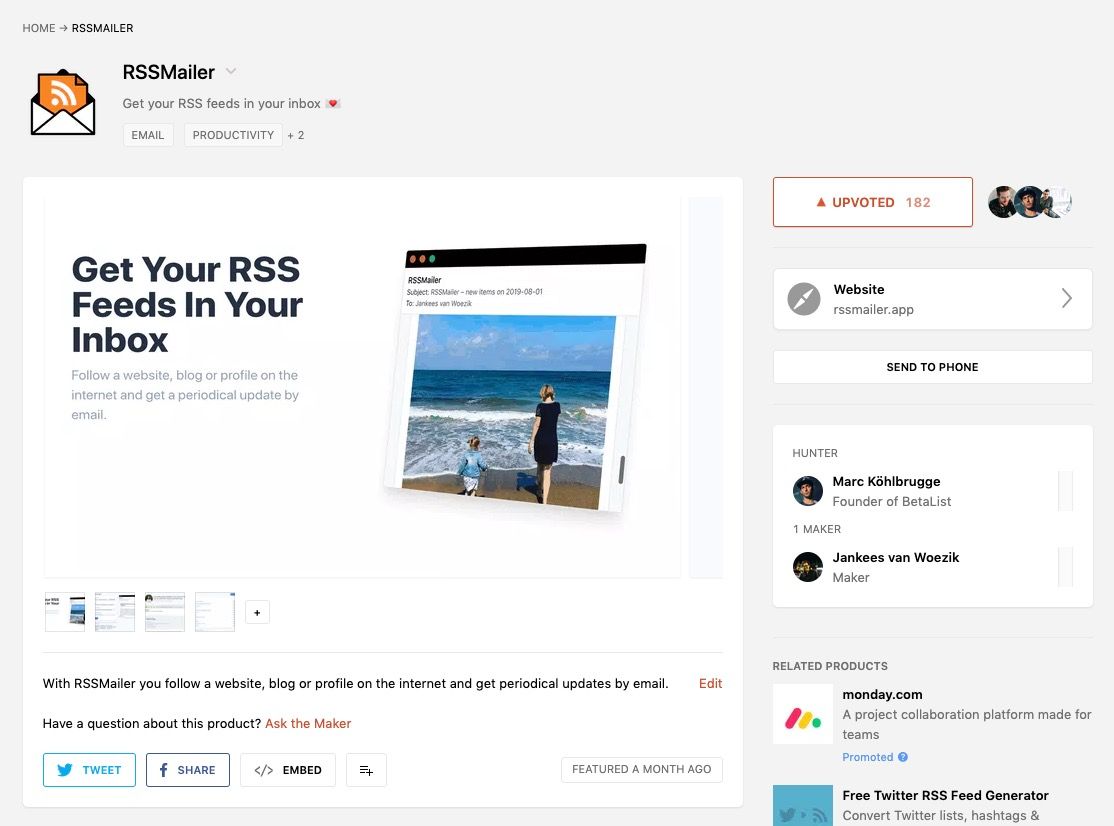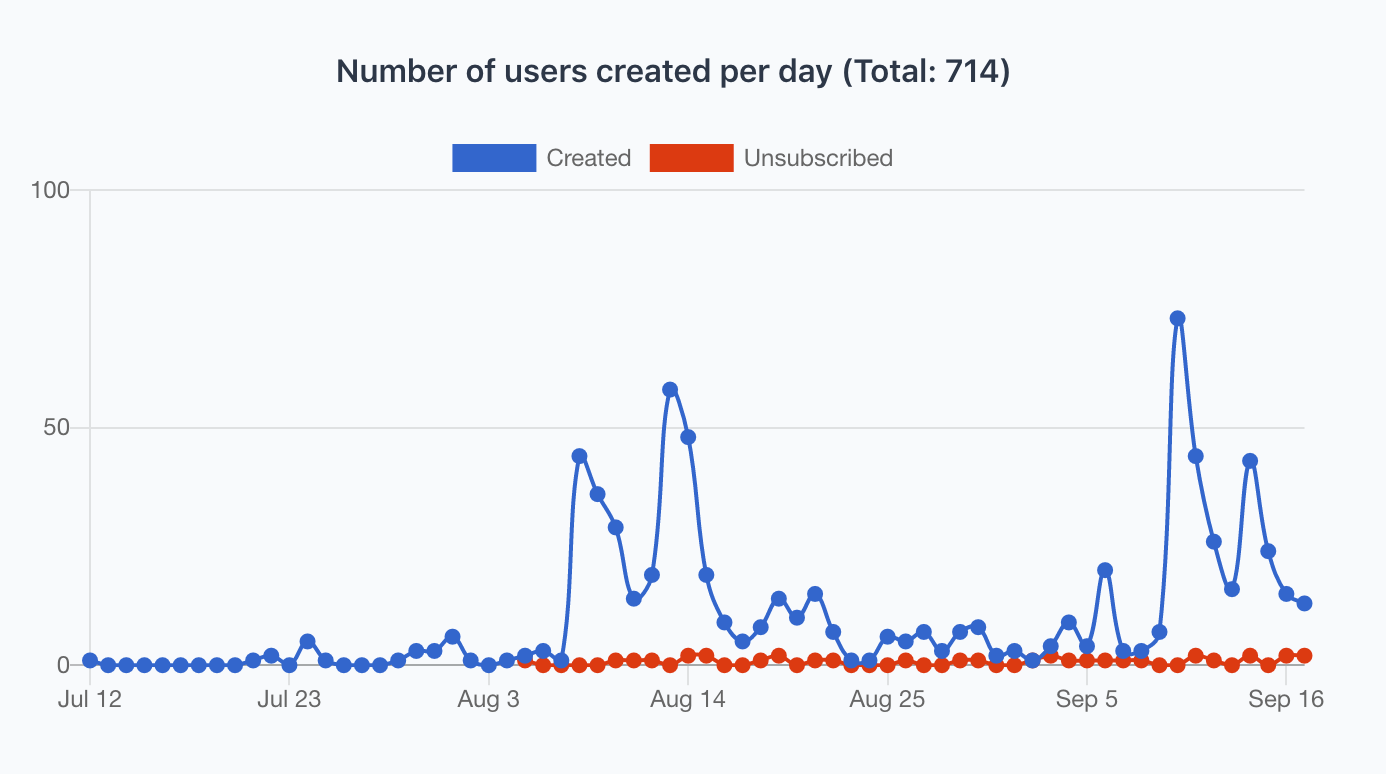RSSMailer
TLDR: A few weeks ago I launched a new side project; it’s called RSSMailer (for lack of a better name). As I am writing this I have over 700 users that signed up to this (free) service. It’s a service that helps you to get RSS back into your system by emailing new items daily. Some of the platforms that are supported: YouTube, WordPress, Instagram, Medium, etc.
Why I started with this project
This project was born with two reasons; the first reason is that I started working with Marc Köhlbrugge on WIP and I wanted to test how working in public works. The other reason is that I was looking for a way to get RSS back into my daily routine. Ten years ago I learned a lot from reading other peoples writing and I stopped doing this when Google discontinued Google Reader.
In this post I’m going to talk about the things that stood out to me during the process.
First solo project
For my other side projects, I work with at least one other person. Not only does it motivate me when I’m working together, but it’s also great to have another pair of eyes looking at the product.
For RSSMailer I did it differently, this time I chose to work alone, inspired by the work of Pieter Levels and Marc Köhlbrugge.
When I started with this project, I didn’t know if using email to replace an RSS reader was going to be a great solution, so I didn’t want to waste anyone’s time working on a visual design for me. That’s why I decided to do the design myself. I ordered a starting template to cut some corners in the beginning; after some investigation, I picked Sjabloon.
Sjabloon uses Tailwind CSS for styling. The big difference with regular CSS is that you write your styling in your HTML files and you rarely touch the .css file. Which makes the whole process feel super connected; you open a browser tab with the site and a code editor with the HTML file. And that’s all there is. This is an example of a notice from RSSMailer:
<div class="bg-green-400 text-white p-5 mb-5 shadow-lg rounded flex items-center">
<img src="exclamation.png" class="inline h-6 align-middle mr-2">
Okay great, you added a feed! Tomorrow we will send you an email.
</div>
When you get used to the syntax, it’s pretty self-explanatory. Here are some explanations of the classes you’ve seen in my example above.
bg-green-400 = Background green (the scale goes from 100 to 900)
text-white = White text color
p-5 = Padding (on all sides) of size 5 (1.25rem in my case)
mb-5 = Margin bottom of size 5 (1.25rem in my case)
shadow-lg = Large box shadow
rounded = Border radius
flex = display: flex
items-center = align-items: center
inline = display: inline
h-6 = Height of size 6 (1.5rem in my case)
align-middle = vertical-align: middle
mr-2 = Margin right of size 2 (0.5rem in my case)
This is what the final product looks like:

My first launch on Product Hunt
This was going to be my first launch in a while, and one of the things I wanted to do was launch on Product Hunt. So, I asked Marc if he could hunt it for me, so I launched officially on the 7th of August.

After the launch, I noticed some immediate attention to the product and sign-ups was going pretty good that day. On launch day, I got 44 sign ups:
A few days later, I got some press coverage from other sources, which led to the second spike of 58 sign-ups. All these statistics can be found on https://rssmailer.app/open.

Here are some tweets that I received in the first weeks.
Since the launch, I have been seeing about 10 or more sign ups each day.
The future
At this point, I am not sure what I am going to do with this project yet. I’m thinking about monetization, but with less than 1000 users the economics don’t work out yet. So until the audience has grown, I will probably keep this running.

Hello, I'm Jankees van Woezik
Like this post? Follow me at @jankeesvw on Twitter